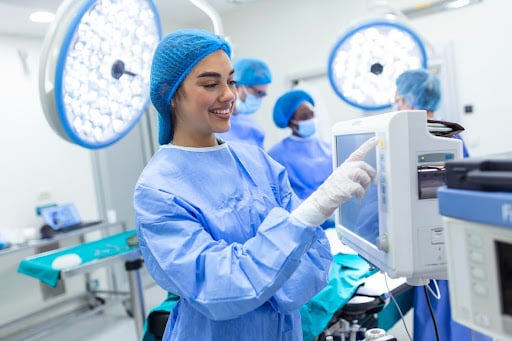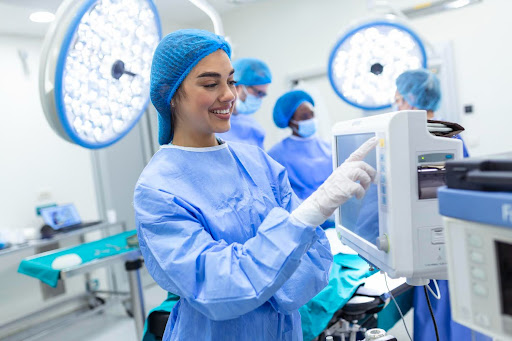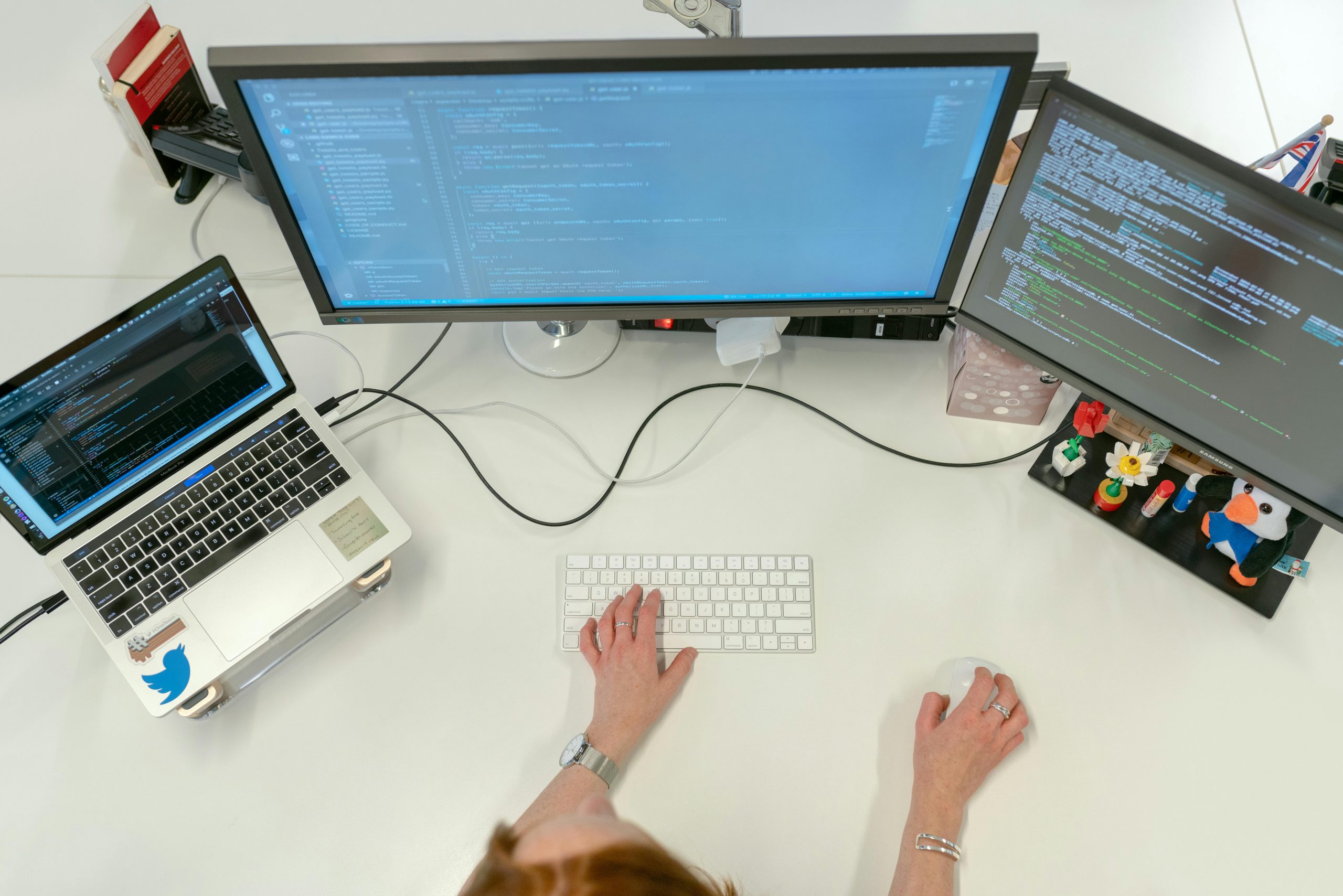Have you ever considered how ICUs (intensive care units) are vital in saving lives in hospitals, particularly for patients requiring constant monitoring? Over 5 million people are admitted to the ICU every year in the United States, according to the Society of Critical Care Statistics. However, it is hard for these departments to ensure patients get the best care. Recent studies have shown that thousands of patients die annually due to medical errors in intensive care units (ICUs). The workload of healthcare workers is constantly increasing. Automated patient monitoring is an essential innovation, and the transformative impact of AI-powered automation is poised to revolutionize healthcare practices.
What Problems do Hospitals face when Monitoring ICU Patients?
Monitoring patients in the ICU is hard work that requires a lot of resources. Hospitals face several issues when managing these tasks:
- Conventional patient tracking relies on people watching and analyzing data by hand, which can lead to mistakes, especially when people are stressed.
- Identifying and responding to a patient's decline can be time-consuming. When doctors ignore warning signs, patients generally have worse outcomes.
- Multiple pieces of monitoring technology in ICUs produce vast amounts of data, called “data overload.” Healthcare workers' inability to quickly and correctly analyze data could lead to mistakes.
- Maintaining constant, thorough tracking of every patient is very hard when staff numbers are limited and patient number that is increasing.

How can AI Automated Patient Monitoring help in ICUs?
Artificial intelligence in healthcare enables ICUs to monitor patients autonomously, improving patient outcomes and optimizing healthcare efficiency. AI ensures prompt and precise care for critical patients in ICUs, streamlines healthcare tasks, and enhances patient care.
Real-time data analysis:
Unlike human staff, AI systems can continuously monitor patients without interruptions or shift changes, ensuring constant vigilance over all patient data and promptly identifying significant changes. Using artificial intelligence, systems can quickly find problems with critical signs like oxygen level, blood pressure, or heart rate. The device ensures prompt action by alerting medical professionals when a significant change is detected.
Big Data and Predictive Analytics
AI can predict severe conditions like sepsis or heart arrest in advance by analyzing past data and using machine learning, leading to better patient outcomes. According to some examples, it can tell if a patient has sepsis or heart arrest based on small changes in their data that a person could miss. Artificial intelligence (AI) helps doctors identify high-risk patients and better distribute resources by assigning patients to groups based on how likely they will get worse. When doing this, looking at several danger indicators can be helpful.
Lower human error
Human fatigue is a big reason mistakes happen when watching patients. Without getting tired, artificial intelligence systems can keep watching continuously and accurately, which lowers the chance of mistakes and oversight. Using artificial intelligence (AI) to understand data consistently eliminates the differences that come from human judgment—standardizing leads to more accurate and regular assessments of patients.
Higher efficiency
Artificial intelligence excels in handling routine monitoring tasks such as tracking vital signs and generating reports, enhancing the efficiency of ICU operations. This automation makes the ICU more efficient by freeing medical staff to focus on more challenging and essential care jobs. Artificial intelligence (AI) uses real-time insights and predictive analytics to ensure that patients get the right care at the right time, allowing the best use of resources like medical staff and equipment.
Data-Driven Choices
VR systems can combine data from EHRs, monitoring devices, and lab reports to analyze patient information comprehensively. When a patient's health information is combined, making intelligent decisions is more accessible. An artificial intelligence system could help make treatment plans specific to each patient's needs and circumstances by analyzing data about each unique patient. This customized approach can lead to better patient outcomes and more effective treatments.
Diagnostics and advanced imaging
AI enhances imaging accuracy and speed for X-rays, CT scans, and MRIs in ICUs. Timely diagnosis is crucial in conditions like pneumonia or brain damage, where immediate action is essential. By finding trends in patient data and imaging results, AI algorithms can help doctors diagnose diseases, making it easier for them to make the correct diagnosis.
Integration with wearable products
Artificial intelligence systems can use wearable devices to track the vital signs of patients who aren't in the intensive care unit (“ICU”). This allows constant tracking and quick treatments, making ICU care available outside of hospitals. Wearable devices enable patients' mobility while under monitoring, reducing risks of long-term complications such as pressure ulcers and muscle loss.
Learning by machines and ongoing development
AI evolves and improves its capabilities over time through ongoing learning and development. More patient data helps algorithms find and predict problems more accurately, leading to new improvements in tracking and treating patients. For example, artificial intelligence allows doctors to provide better care using decision support systems that suggest diagnoses and treatments based on the latest studies and data.
Bottom Line
Using AI in automated patient monitoring changes how ICU patients are treated and solves some of the hospitals' most significant problems. AI ensures improved patient outcomes and operational efficiency through real-time data analysis, predictive analytics, and reduced human errors. With the development of artificial intelligence technologies, the future of ICU care looks bright. By choosing to Hire artificial intelligence developersyour healthcare organization can access cutting-edge solutions that automate patient monitoring and various other healthcare services. These technologies could save more lives and improve the care of critically ill patients.
Artificial intelligence's contribution to monitoring patients in the intensive care unit is not only groundbreaking but also important for the next generation of healthcare. Hospitals and healthcare professionals must embrace new advancements to ensure optimal patient outcomes and effectively address the rising need for ICU care.
Interesting Related Article: “Top 8 Benefits of Partnering With a Healthcare Staffing Agency”









